Episodes
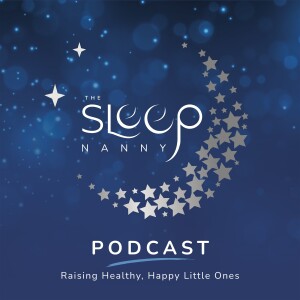
Tuesday Jul 27, 2021
Tuesday Jul 27, 2021
https://youtu.be/amxo25tSAjk
Does your little one fight naps? Ha ha, I hear you.
You are not alone.
Do you find yourself pacing around or walking around with the push chair and just, no matter what you do, you cannot get them to take that sleep. They just fight, fight, fight, even though you know that they're exhausted and really need the sleep. Well, this is all too familiar for us. We know exactly what you're going through.
Many, many parents are struggling with the same thing. But the good news is, we have a solution and we know how to help you to overcome this so that your little one can get the naps they really, really need. Stick around because we're going to share the keys to getting this on track.
The first thing that I'm giving you to help you to get your little one napping well is to understand and to know the ideal intervals for naps at your little one's age, because this changes with age. The older they get, the longer they are able to be awake between sleeps.
If you know what that looks like, you're far more likely to attempt to get your little one down for a sleep at a time that's going to fit better for them. There's no point in trying to force your little one, or trying and trying and trying to get your little one to sleep, when it's not the ideal window for them.
Maybe they're under-tired, maybe they're overtired. And you might think, "But I know my child's exhausted. Why aren't they sleeping?" Because perhaps they're so overtired, they're wired.
When we go into an overtired state, the brain releases hormones that actually are chemically keeping us awake, even though we're exhausted. You could be fighting a losing battle if you're trying to get your little one to try to go to sleep at the wrong time for them.
Knowing what those intervals are is like a sleep secret weapon. And the next thing to note is the ideal nap length. These two go hand in hand. By knowing how long they ought to be asleep for will also help you, because if they are catnapping and if they are grabbing 20, 30 minutes here and there, they're not getting quality rest. They're not getting the sleep they really need.
If you know how long they ought to sleep for, you can help them to get that sleep. If they wake too soon, you can work on a resettling technique and to try to get them back off to sleep, rather than just accepting that that's it now. That's the end of that nap.
And I say they go hand in hand because actually getting them down for the sleep at the ideal optimal window is more likely to lead to the ideal optimal length of nap as well.
Just understanding those things and knowing what that looks like at every age and stage means that you're informed and you can get little one down at the right time and for the right amount of time.
Now, something that is often overlooked when you're facing nap challenges is bedtime. Bedtime's important too. It plays a part in this because overtiredness is going to sabotage the naps. And if your little one is overtired because bedtime is not great or takes too long, or they're going to sleep too late, if they're overtired, then the next day, they're overtired already.
Again, fighting a losing battle because they're going to find it very difficult to go to sleep when they're overtired. Of course, occasionally, they will crash and burn and they will just zonk out, but that's not what will happen regularly. Those are usually one-offs, and then not great quality.
And the other thing to look at is the sleep onset. You could have these things checked off your list and go, "Yep, yep, yep. Got that. Got that." But what about the sleep onset? And by sleep onset, I mean, how your little one falls to sleep.
Is there something that does it for them or is there something you n...
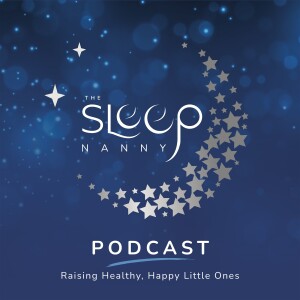
Tuesday Jul 13, 2021
Tuesday Jul 13, 2021
Are you planning a trip or a family holiday with your little ones this year? Are you worried that things might be different where you're going? That they're not going to be in their usual sleep environment? And that the day-to-day routine is going to be different?
And does it concern you that you want to be able to do fun things and take days out, and enjoy your family time away without feeling totally tied to a little one's routine, but at the same time, without completely breaking them in terms of their sleep?
Try these ideas:
Starting off with the journey
When you head off on your trip, whether you're going by road, rail, plane, it doesn't matter, the core principles are the same, and that is on that journey, you're going to need to take care of a few key things. One of them is going to be entertainment.
So what could that look like? Well, think about your mode of transport and what would be suitable. For instance, there are things that you can do with your child if you're a passenger sitting next to them on an aeroplane that you can't do with your child if you’re driving a car so you've got to consider what it's going to be. Is it something they can do themselves, or is it something that you need to assist with?
If they're going to have some screen time, then have a think about when that's most appropriate, when do you need to pull that one out of the bag most?
Let's face it, as parents, sometimes that can be a useful secret weapon when we just need to figure something out, or we're driving, or we just need to appease them for a little while, so when would that be suitable, and therefore you can then try to avoid it being ALL the time, so they're not just glued to a screen for the entire journey.
Also, try and avoid that screen time right when you want them to go to sleep, because it will wire them, and it will stop them falling asleep.
What kinds of entertainment can you give your little ones? If they're old enough for audiobooks, those are amazing, because you can put that on in the car, you can give them headphones and let them listen to that on any form of transport.
If you have a few children, they can listen to their own ones on their headphones, so audiobooks are great, and of course they can also fall asleep to them, so if they’re listening to one, they're more likely to nod off than they would be if their eyes are fixed on a screen.
If they're not old enough for audiobooks, then they maybe just enjoy some music. Put some of their favorite tunes into a playlist, and again, whether you play that to the whole car, or whether they're on a plane and you're going to put that on headphones, music can be helpful.
But really little ones, babies and toddlers, probably would not sit still for more than one song, and they're going to need more physical forms of entertainment, so I recommend small, unbreakable, light toys, and I like to use the idea of pocket money toys.
I highly recommend ahead of your trip that you slowly start to accumulate a few new little toys, a variety of things that you can pull out of the bag to grab their attention for a little while on your journey. It's like a little holiday swag bag of new things. And don't let them delve into that bag and look at them all at once, space it out so that you can pull out a new thing at various intervals.
Food
When you're on the journey, they're probably going to be hungry, unless the journey's very, very short, so you need to think about this, and if you're on the road, are you going to factor in stops for food or feeding your baby? If you're flying, are you taking things with you, have you arranged with the airline... Are you going to have meals on board?
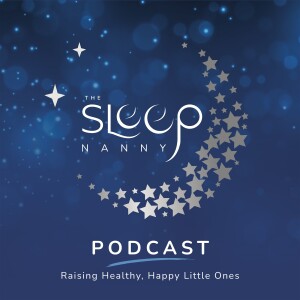
Tuesday Dec 22, 2020
Tuesday Dec 22, 2020
https://youtu.be/22bmNR0ownM
You might have heard of the pick up put down method and whilst it has some great principles, I want to share with you my modernised idea for this approach.
The current pick up put down ‘method’ can be quite confusing and, in my opinion it’s a little outdated.
Pick up put down is an idea that suggests your little one will gradually adjust to being laid down in their sleep space for sleep if you give them intervals of time in there with intermittent pick ups to sooth them and then place them back down again.
In theory, this is great and I support the idea however, parents are often confused as to;
How often can I pick up?
For how long? And also;
Could it inadvertently teach your baby to cry to be picked up?
To clean this up and bring it into the 21st century, I devised the ‘Nano Night Night’ method.
This involves micro steps that you can use prior to commencing my fade out approach to sleep training and you can also use this method as practice with younger babies right from the early weeks!
Who is it for?
The Nano Night Night method is for parents and caregivers of babies who are really struggling to be put down for sleeps. If you find yourself having to hold your baby to sleep all the time, not because you want to but because you feel it’s the only way, then this is not safe or sensible and the Nano Night Night method will help your baby to develop some early self regulatory skills in a very subtle way.
How it works-
Take the current most favoured position in which you hold your baby to sleep and notice any swaying, rocking and all the detail about how you’re doing this.
Your first Nano step is to change this position very slightly. So if your baby is typically against your chest with their head on your shoulder, switch to more of a side hold. If you currently do this standing up, try your new position while sitting down. Just one nano step, a small and subtle change to the way you usually hold your baby to sleep.
It should be noticeable to your baby so expect a little fussing and dissatisfaction with the change. This tells us that your baby has noticed and then you can help stretch his or her comfort zone by showing them that this new position is fine too and they will soon adjust if the change is subtle.
If they don’t even care or notice anything is different then it isn’t different enough. We need to help them feel at ease in a slightly different position that is just outside of their comfort zone.
Okay, so night one you just keep going with the new hold until baby is asleep and put him or her down as usual. Repeat if need be if he or she wakes up. Depending on how sensitive your baby is will depend whether you use that nano change in position for another night or move right along to your next nano step but certainly don’t stay with any new position for more than two nights, we need to keep the momentum with this method.
Then, Make your next nano step which might mean sitting with your baby in arms but further away from your chest or eliminating any rocking.
Each nano step should be a position that more closely resembles the cot or crib space so less bodily contact with you, no motion and laying horizontally are all good moves.
Once you have ‘nano stepped’ your way to being able to hold your baby on your lap, away from your torso, horizontally and without rocking or swaying, your baby is definitely ready for the move to being placed down in the crib.
This milestone comes with some extra contact to help ease the transition which I recommend looks like this;
After a short period of holding in your final nano step, place your baby down before they fall asleep but allow one arm to go along with them into the crib.
It might feel a little awkward so try to position yourself in a way that is reasonable comfortable but by allowing...
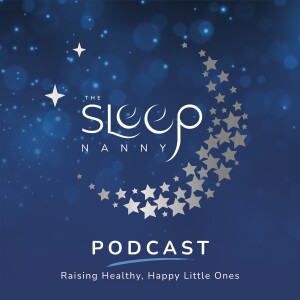
Tuesday Dec 15, 2020
Tuesday Dec 15, 2020
This week I am ‘sleep talking with’ Certified Sleep Nanny Consultant, Vickie Gordon.
Vickie is mum to Emily and Harry, 5 year old twins, and has been a professional nanny for 21 years. In this episode of Sleep Talking, Vickie shares with us what motivated her to become a sleep consultant and how she has juggled building her own business alongside nannying AND raising her twins.
During her career as a nanny, Vickie has witnessed many sleep challenges. In the beginning she would be totally led by the parents regarding sleep and if the baby was rocked to sleep, she would rock baby to sleep. But like with any job, she gradually grew in confidence and experience and would suggest different ideas to parents.
Sleep has always intrigued Vickie and she was fascinated by how families could let themselves get to such desperate sleep situations. So adding sleep consulting expertise to her CV was a really valuable string to her bow. Whilst she doesn’t lead with the fact that she is a sleep consultant when meeting new families to nanny for, she definitely makes sure she mentions it somewhere as it gives her the edge! Families appreciate that she has a good understanding of the science behind sleep and can help improve their situations. Alongside this, Vickie works with clients exclusively on sleep as well and she loves every minute.
We talked about how Vickie has found sleep consulting in 2020 and she has felt it has been a good year business wise. She has found that parents have been really dedicated and motivated to get things sorted. She puts this down to both parents being at home during the lock downs. In the past, it may have been just mum or dad at home experiencing the effects of disrupted sleep and an overtired child but now often they have both had a taste of what its like to deal with a sleep deprived child day and night!
Working from home during the lock-downs has meant that Vickie had to be super organised and be 2 or 3 steps ahead of the game rather than 1! This helped Vickie get into a rhythm with working from home, being mum, and home schooling.
The thing that Vickie loves most about sleep consulting is the end result, seeing the families lives change once they have the rest they need! It’s about looking at each family’s circumstances and seeing how she can transform things and looking at the individual families goals, who often can’t even believe that they can get there, but they do!!
Register for An Introduction To Childhood Sleep Consulting https://www.sleepnannyacademy.com/ICSC-register
Get in touch with Vickie today if you would like more information on how she can support you with your sleep goals!
Vickie Gordon, Certified Sleep Nanny Consultant.
Click HERE to book in a FREE evaluation call with Vickie today.
Instagram: https://www.instagram.com/vickie_sleep_consultant/
Facebook: https://www.facebook.com/vickiesleepconsultant
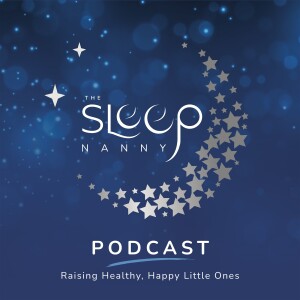
Tuesday Dec 08, 2020
Tuesday Dec 08, 2020
Babies and young children are unwell quite often, there is teething which might feel endless and the common coughs and colds and runny noses which may be more prevalent in children who attend daycare. It’s totally fine and in some ways beneficial to them as it will help develop their immune systems and make them stronger but a teething or poorly little one can affect a good night’s sleep for a number of reasons.
Teething pain comes from the build up of blood pressure in the gums and during the daytime, they tend to alleviate this pain by chewing on things and biting on things which releases some of that pressure.
At night time, when they are resting, the pressure can build up to a point that the pain disturbs their sleep. Also, sucking draws blood to the gums and can increase the pressure too so bottle feeding, breast feeding and dummies can all add to the pain.
Some little ones will reject or fuss over feeds because they want the milk and they want something in the mouth where the pain is, but it also hurts so they may feel a bit confused and conflicted about it – have patience with this and if you have any favourite teething pain relievers, it might be a good idea to use them 10 minutes before that last feed at bedtime to ensure they take a good feed before they go down for the night.
Your little one might seek some extra comfort when teething so consider how you can offer this without completely changing your routine or throwing out the rule book!
The same goes for illness and typically the common cold.
Congestion is the worst for sleep as it makes it harder for us to breath and always tends to be worse at bedtime when we first lay down. Depending on the age of your little one, you may be able to safely elevate one end of their crib or use an extra pillow for an older child to ease to congestion – only do this if it is safe to like with a crib that has the elevating feature and age appropriately.
Humidifiers can help with congestion as well, or a steamy bathroom experience right before bedtime.
If you’re in the middle of sleep training with your little one when illness or teething strikes, you may decide to pause until they are over the worst of it. If you do, try to maintain the stage at which you have got. So don’t try to progress with your plan and also don’t go backwards by totally stopping what you’re doing – See how you can best keep going as you are, perhaps with a little extra reassurance and assistance but without a total throw out of all the hard work you have been doing.
”Alleviate, don’t deviate”
As parents, we often overcompensate when our young ones are under the weather because we feel helpless and want to make things better for them. In fact, it’s probably more for you than for your child and that’s something worth asking yourself…’Am I doing this for my baby or am I doing this for me, who is this going to help to feel better?’
So stick to your routine because the routine itself doesn’t need to change. Add in some extra comfort as needed but without overdoing it or undoing your ‘rules and boundaries’.
If your little one sleeps in their own cot or bed, sleeping in your bed is NOT going to take away the pain or discomfort. If you feel worried and want them close by, set up camp in their room and change your sleep location rather than theirs. As soon as your little one is over the worst of it, try to get back on track or continue on with your sleep training plan if you’re following one. You don’t need to wait for a full recovery, just on the mend and feeling brighter and you’re good to get on with things. The less you change, the easier it will be to get back on track.
And lastly, what if they’re sick or you have a clean up to do in the night?
Deal with the mess as calmly, quietly and as swiftly as possible with the least amount of light you can manage in!

Tuesday Dec 01, 2020
Tuesday Dec 01, 2020
Early rising or early morning waking is when a little one repeatedly wakes for the day earlier than 6a.m.
Parents often say ‘my child’s just an early riser’ but this doesn’t have to be the way! We can get your little one sleeping soundly to at least 6a.m consistently, we just need to figure out the cause of the early mornings and address it.
The number one reason for early rising is over tiredness.
When a parent tells me their child is waking really early every day, I immediately investigate 3 things;
* Whether or not they are getting enough daytime sleep
* If they’re awake for too long between sleeps
* If bedtime is regularly too late.
Most of the time one or more of those things is the cause of the early starts.
It may sound strange and certainly counter-intuitive because you’d think a tired child would sleep in, right?
Nope, being over tired actually leads to shorter and less restful periods of sleep and this is why it catches so many people out. The idea of ‘wearing a child out’ or keeping them awake in the day so they will sleep at night is actually the worst thing you can do.
So the first step to resolving early morning wake ups is to have a look at your child’s schedule.
* How much daytime sleep did they ought to be getting?
* What’s the maximum amount of time they should be awake for between sleeps
* and are they getting to bed at a consistent and sensible time each night?
Fixing this up could resolve the early waking within a week or two.
Other top tips for helping to reduce early rising include; blackout blinds, sleep-wake triggers and how you respond.
Blackout blinds are great because it’s important to block out ALL of the natural light from your little one’s room. Any form of daylight is known as ‘blue light’ and, just like screens, it affects the production of melatonin, the sleepy hormone. In other words, it fools us into thinking it’s time to be awake. If you or your child need some light in the room, go for a very dim red or amber night light but keep the natural light out when it’s sleep time.
A sleep-wake clock or trigger is fantastic for teaching little ones when it is time to be asleep and when it is okay to wake up for the day. From around 20 months of age, a child can understand a simple trigger. Personally, I love the KidsSleep clocks which have a little character on them who is clearly tucked up in bed at night or up in the sunshine when it’s daytime – Having the picture to give the child a visual cue is great and it’s easier to understand than trying to teach them that certain shapes or colours mean sleep or wake time. A simple light timer is okay too. When the light is off, it’s sleep time. When the light turns on, it’s okay to wake up.
The last key to managing an early riser is to have a consistent response to each and any waking in the night and to maintain this response until at least 6a.m when it is okay to wake for the day. If you allow your little one to continually start the day really early, this will become ingrained in their body clock and a habit. We want to show them that it’s still night time and not yet time to be up.
I’ll tell you now, when a little one is waking regularly at around 5a.m due to over tiredness, it is unlikely that he or she will actually go back to sleep, they’re usually wired, but nevertheless you need to keep going with your nighttime response until 6a.m whilst working on the other things to overcome the over tiredness.
So a quick recap;
Establish where the over tiredness is coming from and begin working on replenishing your little one’s sleep tank. Prepare the room with blackout blinds, a night light if needed and a sleep wake trigger like a clock or a light on timer and know how you are going to respond consistently to any wakings that happen before 6a.
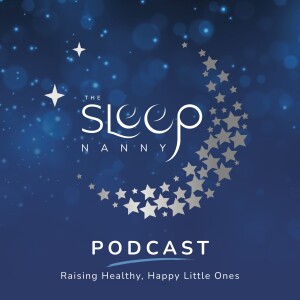
Tuesday Nov 24, 2020
Tuesday Nov 24, 2020
When is your little one ready to transition from 2 naps to 1?
The 2 to 1 nap transition can be complicated and it can be on and off for a number of weeks so you need to be prepared.
It tends to happen between the broad range of 13-17 months.
Some little ones will show early signs with resisting one of their naps at around 12 months but this really is a bit too young to begin the transition. When they do show signs on the early side, it tends to be temporary and then they’re back to their two naps again for a while.
What are the signs?
Resisting one of the naps tends to be the first sign that your little one is preparing to drop to one nap but if your child is not a great napper anyway, this is going to be hard to spot. Keep a close eye on your child for signs of tiredness such as eye rubbing and yawning, clinginess and fractiousness. The last thing you want as this transition comes along is for your little one to be getting unnecessarily overtired.
How do you navigate this when they don’t sleep at the ideal times?
The two nap schedule should equate to around three hours of daytime sleep so when you drop down to one nap, it is likely to be one long one at first.
* It may be as long as 3 hours and then settle to a more regular two and a half hours.
* It sits best right in the middle of your little ones day with around 5 hours of awake time either side, for example, a baby waking at 6 a.m could nap from midday to 2.30p.m and then be asleep again for 7p.m.
* Most little ones benefit from going to bed a little earlier when they are making the transition and this helps avoid any over tiredness as they adjust to managing the longer awake stretches during the day. This is especially helpful if your toddler isn’t managing the full 2 plus hours of nap time he or she really needs or if they nod off a bit too early and the afternoon is too long.
The main thing is to take each day as it comes and equip yourself to navigate this transition. Sometimes you will have a run of one nap days and then find a few days when two naps are required again and that’s a totally normal part of this transition.
And how long will this transition take?
Unlike the 3-2 nap transition which can take a week or two, this transition might take 4-6 weeks to fully work through. The main thing to remember is that your little one might need to top up on sleep here and there as he or she makes this transition and your aim is to avoid over tiredness.
Join us for a free masterclass – Sleep Training Made Simple: https://www.sleepnanny.net/ss-register
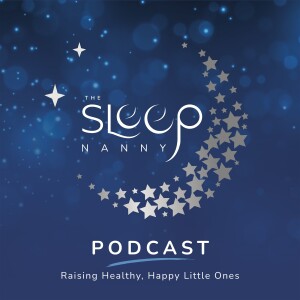
Tuesday Nov 17, 2020
Tuesday Nov 17, 2020
Today I am ‘Sleep talking with…’ Certified Sleep Nanny Consultant Helen Farmer.
Helen has been running her sleep consulting business for well over a year now. She is a Mum of four beautiful children, three boys and a little girl, aged 10, 6, 5 and 2 and a half years old.
When she had her boys Helen wasn’t aware of sleep training or consulting, they all had sleep challenges that, at the time they just got on with. However, as a family they placed a lot of value on sleep, despite not always getting that much!
Her youngest presented sleep challenges from the start, Helen was feeding her all through the night all the while trying to protect the boys sleep. She looks back now and can see it really was a one woman show. A middle of the night ‘Google’ made her aware of sleep training and The Sleep Nanny® brand and she felt like the training was for her!
The added bonus was that she had an ongoing active case study with her own daughter!
The first 6 months of running her own business was challenging. Helen was working in a 9-5 job as a Paediatric Occupational Therapist whilst trying to set up a business, and all the while being mum. Helen was frustrated as there was a lot of interest in her services but she wasn’t always able to contact her sleep clients whilst juggling mum life and an ‘office job’.
So she took the leap and focused fully on her sleep consulting business – She has no regrets and has given it everything!
Helen’s family is now feeling the benefits from the career change as she can work around her kids and is able to do school runs and other family commitments. If it’s a particularly busy family day, Helen can keep it clear and feels she can juggle it all now. It’s busy but in a really different and better way.
Being at home and being mum is a really important and busy job for Helen but her business has given her something for herself, for her career, to be able to develop herself but be present for her family too. Right now is a particularly busy for Helen as she is finding that many families are using the lock down to address sleep issues or challenges.
The real buzz she gets is when she has a conversation with a prospective new client who is often in a bad way. She loves guiding them from this place of broken sleep, where it’s affecting the child’s personality and behaviour or the parents mental health/relationships to transforming their sleep and lives.
The ripples of the changes throughout the family is so rewarding to witness.
Helen’s ultimate goal is to keep building and growing her business and to keep stepping outside her comfort zone. She has no regrets on where she is at the minute and is excited about what the future brings!
We hope you’ve enjoyed hearing Helen’s story (either on the YouTube channel or the podcast version)
You can connect with Helen today, click HERE book a FREE sleep evaluation call with Helen.
Facebook page: https://www.facebook.com/helensleepnanny/
Instagram: https://www.instagram.com/helensleepnanny/
Inspired to explore sleep consulting as a business for yourself? Register for our free training: An Introduction To Childhood Sleep Consulting >> https://www.sleepnannyacademy.com/ICSC-register
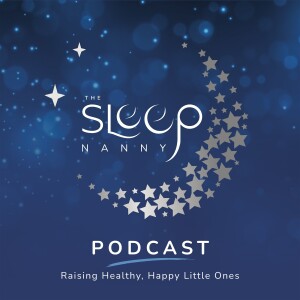
Tuesday Nov 10, 2020
Tuesday Nov 10, 2020
The number one question with any training or program is ‘will it work for me?’
When you set out to achieve something, it doesn’t matter how highly regarded the expert is or how many success stories you’ve read. You could be all set up with the best coaching, the most powerful tools and the most proven strategy there is BUT, if your mindset is not right, it won’t work for you, period.
There are a number of mindset factors that come into play and we address all of these in our training but in this video I focus on two key areas.
Beliefs and Self Sabotage.
If you have beliefs that come from perhaps, your childbirth experience, trauma, your own childhood or simply the circles you connect with, those beliefs are likely to control your ability to make choices and perform the actions required to reach your goals.
So, if I were to tell you exactly what you need to do to get your baby to sleep through the night but you’re holding onto a belief that makes you think you have to hold your baby in your arms until they fall asleep, we’re not going to make progress
It won’t work for you. But it’s not IT that isn’t working, it’s you that either doesn’t want to do the work or you’re holding on tight to a belief that doesn’t allow you to do the work.
The second mindset factor is self sabotage. The easiest way to to get ourselves off the hook when our beliefs are holding us back is to self sabotage.
Often completely unconsciously, our brains will send signals around our bodies to keep us safe in our comfort zones creating more false and limiting beliefs, you know, the ones we call reasons, (i.e. excuses). We are so strongly wired to let fear rule the show that we will actually use more energy sabotaging ourselves than it would take to work through limiting beliefs and do what’s required to achieve what we desire!
So why won’t sleep training work for you?
Sleep training will not work for you if you do not address your beliefs right at the start. You can do this on your own or with our programs, we do it as part of the process because, if your mindset is not in the right place, you’re not going to implement the strategy.
Success is 80% mindset and only 20% strategy
If you’re trying to get your little one to sleep more soundly, you can register for our free class: Sleep Training Made Simple >> https://www.sleepnanny.net/ss-register
Or, if you are wondering what it takes to become a sleep consultant and think this could be a good business for you to get into, register for our free training: An Introduction To Childhood Sleep Consulting >>>https://www.sleepnannyacademy.com/ICSC-register<<
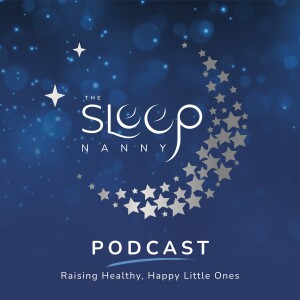
Tuesday Nov 03, 2020
Tuesday Nov 03, 2020
What is a dream feed?
In short, a dream feed is a ‘proactive’ feed that you offer your baby while they are asleep. It’s a great option if you are down to just that one feed per night and you’re not sure whether or not your baby still needs that top up or not.
To be clear, when your baby wakes and cries, it’s natural and essential to respond with milk, especially in the early weeks. Of course, you must feed a hungry baby but beyond 4, 5 or 6 months, this expectation for milk at every minor waking can lead to an unnecessary reliance on milk to induce sleep.
How does a dream feed work?
The way it works is that you feed your baby the last feed before bedtime, assist them off to sleep afterwards and then visit your baby with a dream feed probably around 10-11p.m.
This time is ideal because it’s likely around 4 hours since the last feed and it’s a good time before many parents will want to settle for a longer stretch of sleep too.
You give the milk (without turning the lights on) and your baby may wake up, feed asleep or wake then doze back off while feeding, it really doesn’t matter.
The point is, your baby has the milk but did not wake up, cry out and have the milk come as a response to the crying.
Why is a dream feed helpful?
When you’re sleep training you need to be consistent with how you respond so if you’re down to the one feed and you can do this as a dream feed, this allows for the absolute consistency that every response to any actual wakings can be the same every time – You’ve taken care of the potential hunger with the dream feed and your baby can trust and rely upon a reassuring response from you any time he or she wakes.
How do I stop dream feeding?
The answer to that one is you just stop! My suggestion is that you experience a run of consecutive nights where your little one has slept well and resettled in the night without any milk beyond the dream feed.
When you then try a night without any dream feed, you will either find it all goes smoothly and any wakings are easily resettled without milk, or you’ll find a very different type of waking occurs perhaps at 3a.m and your little one persists hard when he or she would usually have resettled…this might be a sign of hunger and will tell you that the dream feed was serving a purpose and it is better to keep going with it for a while longer
Join us for a free masterclass – Sleep Training Made Simple: https://www.sleepnanny.net/ss-register







